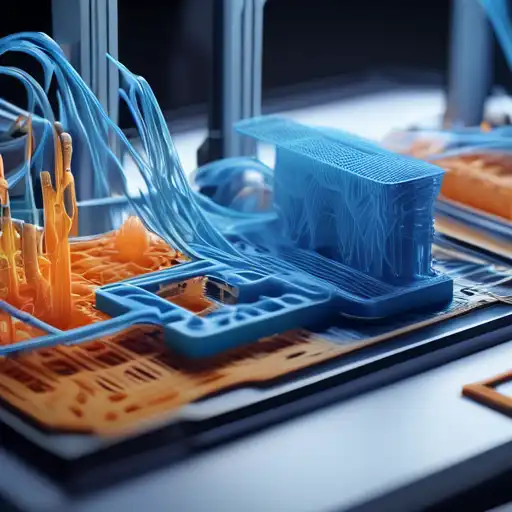Introduction to 3D Printing
3D printing, also known as additive manufacturing, is a process of creating three-dimensional objects from a digital file. This innovative technology builds objects layer by layer, offering unparalleled flexibility in design and manufacturing. From prototyping to production, 3D printing is revolutionizing industries worldwide.
How 3D Printing Works
The 3D printing process begins with a digital 3D model, which is sliced into thin layers by specialized software. The printer then builds the object by depositing material layer by layer until the entire object is formed. Materials used can range from plastics and metals to ceramics and even biological materials, depending on the application.
Applications of 3D Printing
3D printing has found applications in various fields, including healthcare, where it's used to create prosthetics and implants; aerospace, for lightweight components; and even in the food industry for intricate designs. The possibilities are endless, with new applications being discovered regularly.
Healthcare Innovations
In healthcare, 3D printing is used to produce custom prosthetics and implants tailored to individual patients, significantly improving comfort and functionality. Researchers are also exploring the potential for 3D printed organs, which could revolutionize transplants.
Aerospace and Automotive
The aerospace and automotive industries benefit from 3D printing by creating lightweight, complex parts that reduce weight and improve fuel efficiency. This technology allows for the production of parts that would be impossible to manufacture using traditional methods.
The Future of 3D Printing
As 3D printing technology continues to evolve, its impact on manufacturing and design is expected to grow. With advancements in materials and printing speeds, 3D printing is set to become even more integral to various industries, offering sustainable and cost-effective solutions.
Sustainability and 3D Printing
3D printing promotes sustainability by minimizing waste through additive processes, unlike traditional subtractive manufacturing. This efficiency, combined with the ability to recycle materials, positions 3D printing as a green technology for the future.
Conclusion
3D printing is not just a technological innovation; it's a paradigm shift in how we conceive, design, and manufacture objects. By enabling customization, reducing waste, and opening new possibilities in design, 3D printing is truly creating the future layer by layer. As we continue to explore its potential, the boundaries of what can be achieved are only limited by our imagination.
